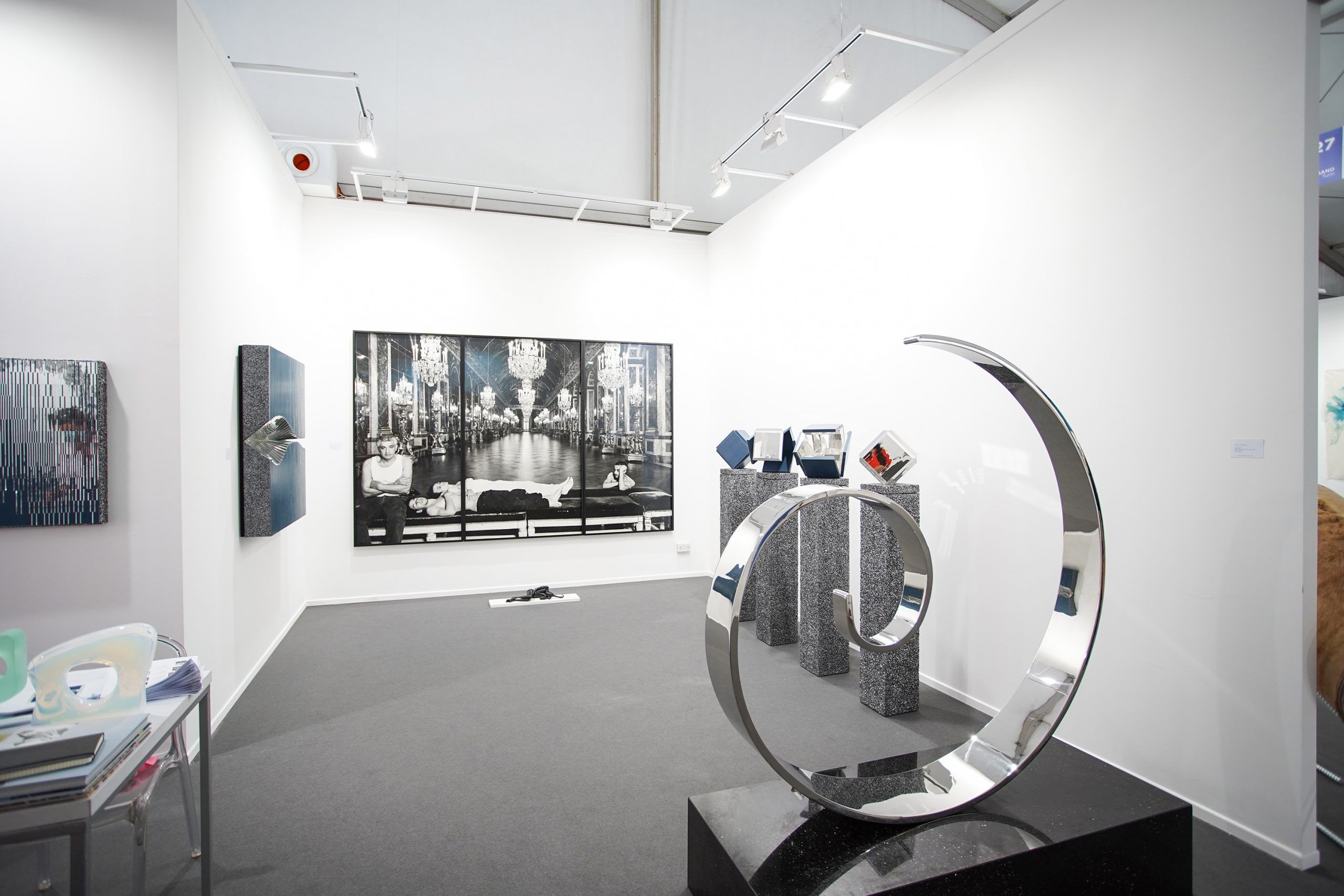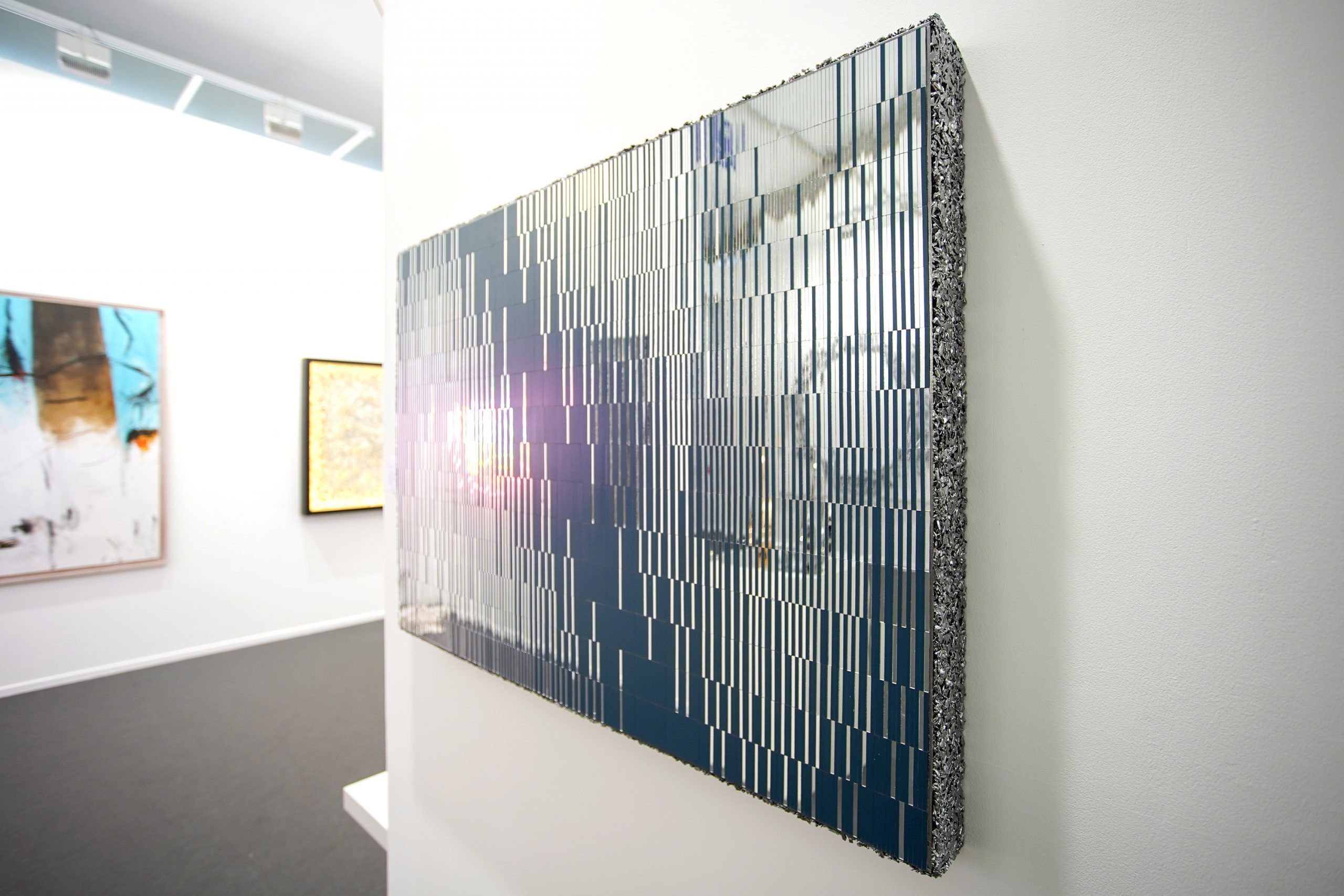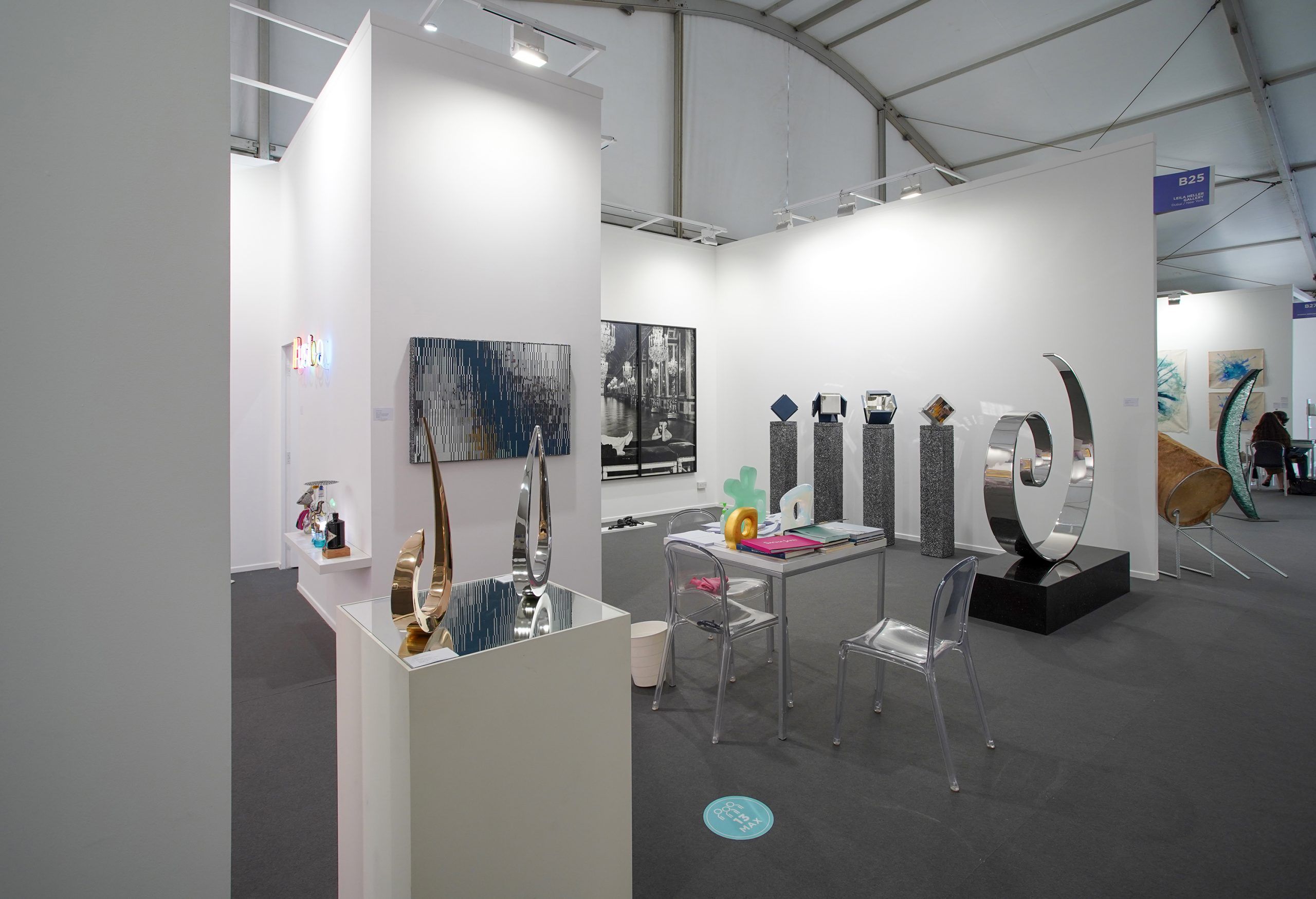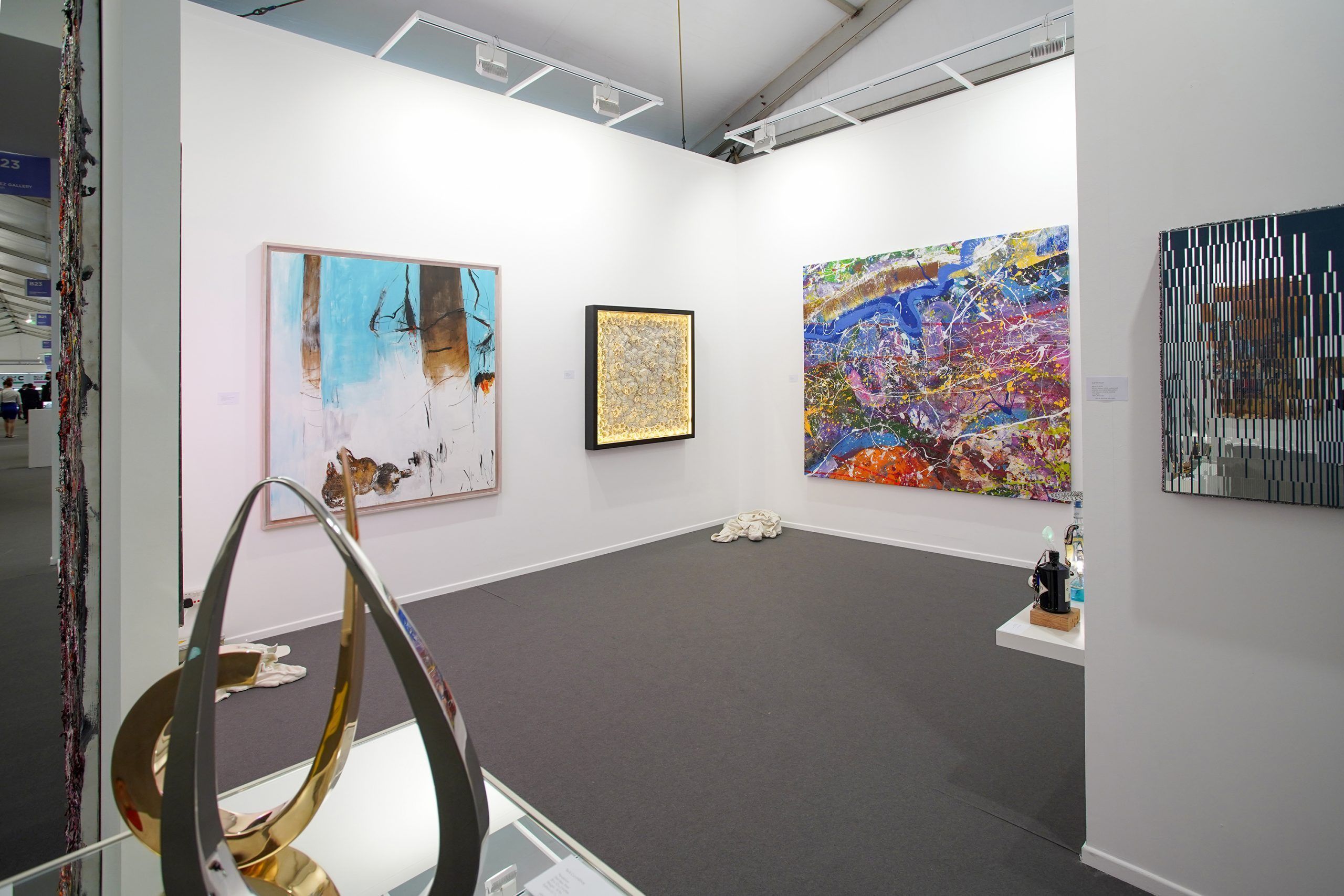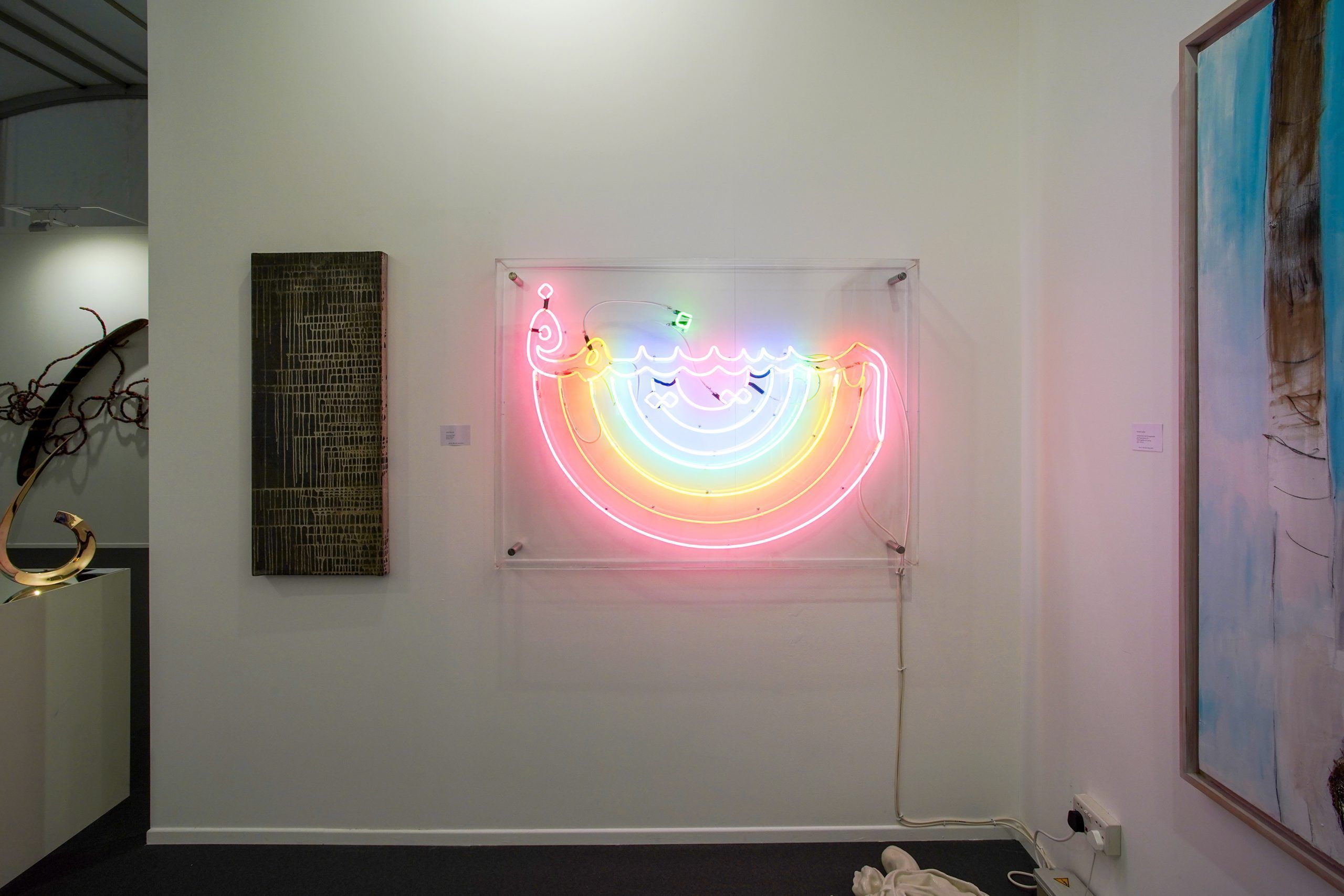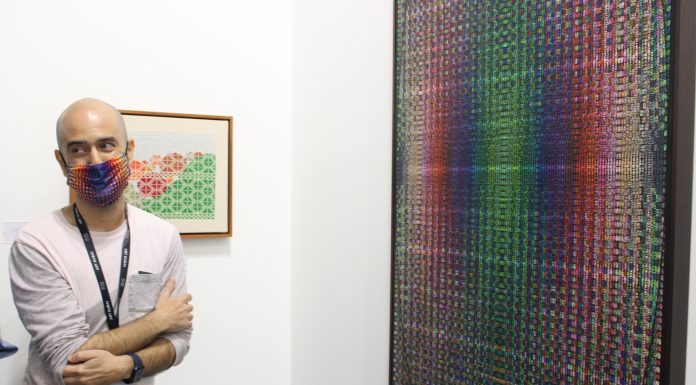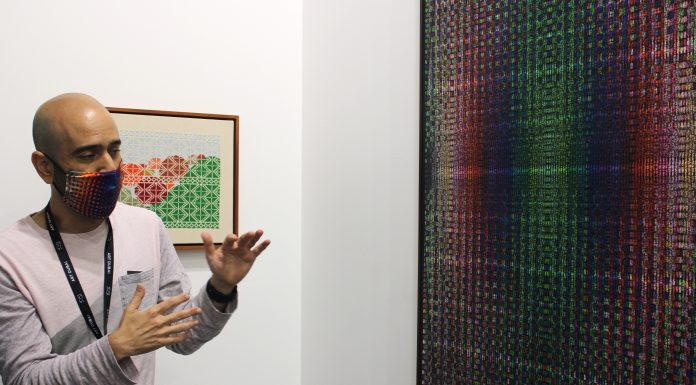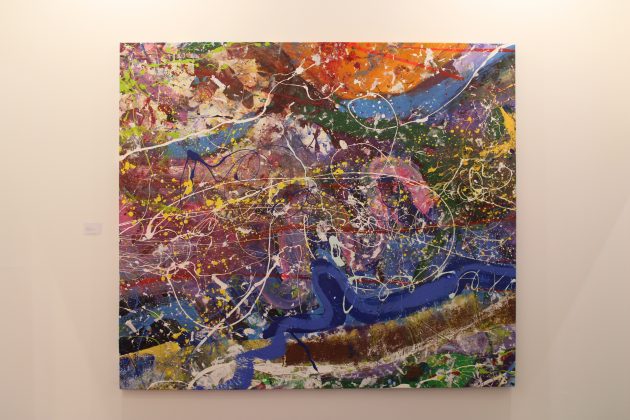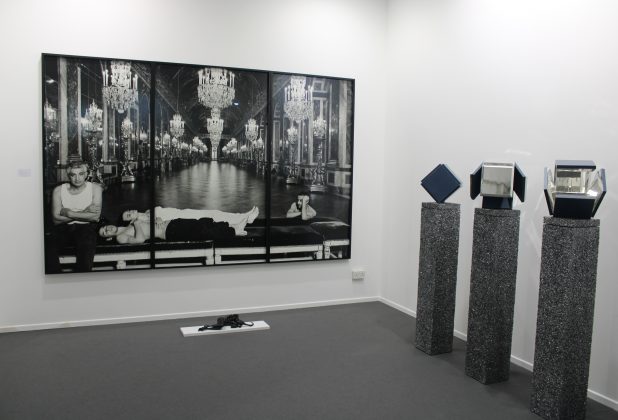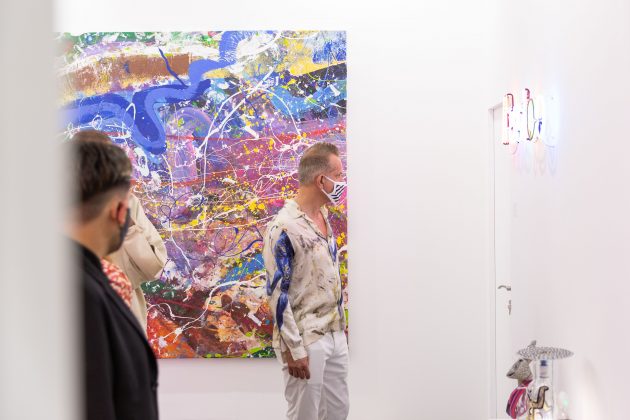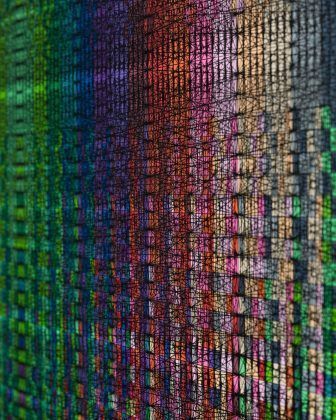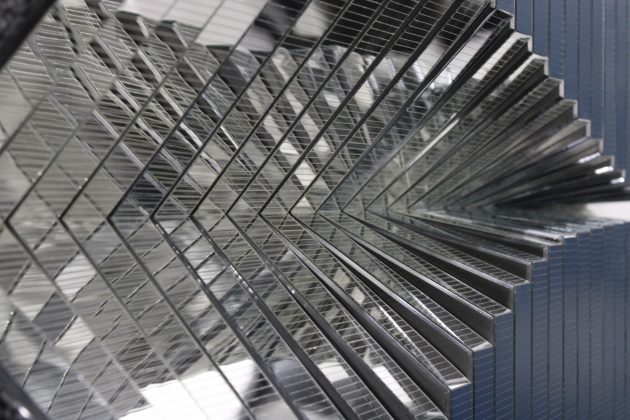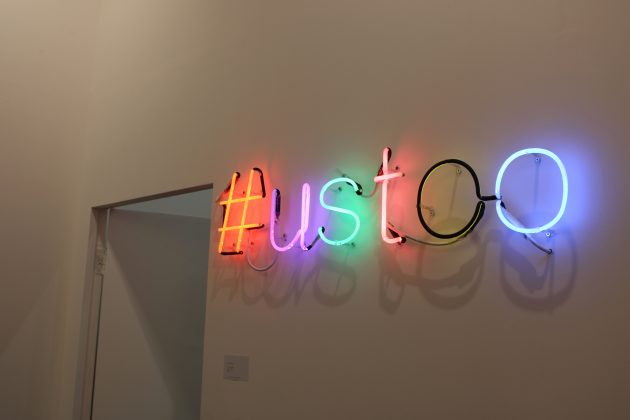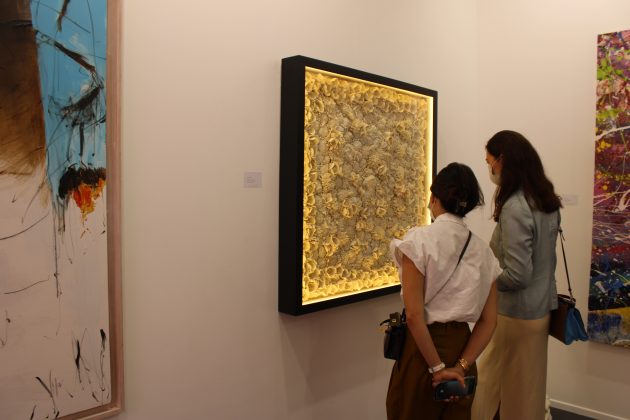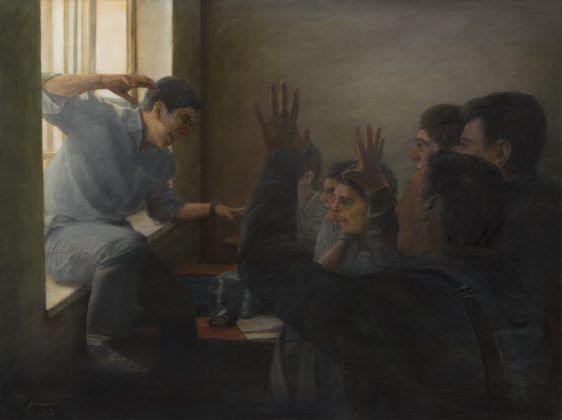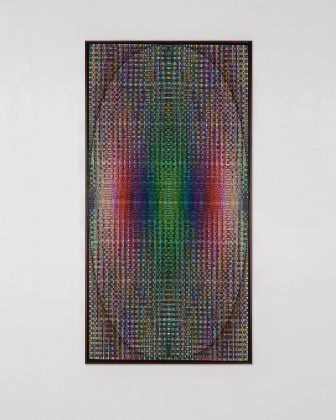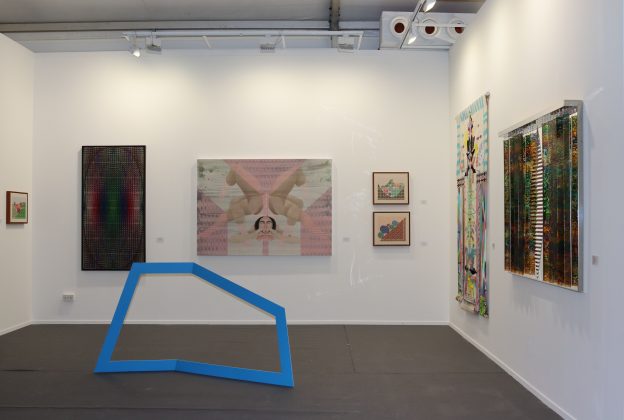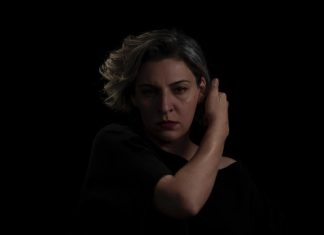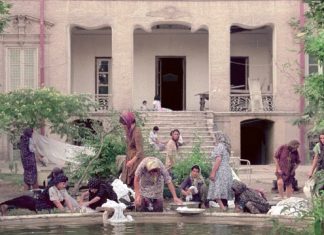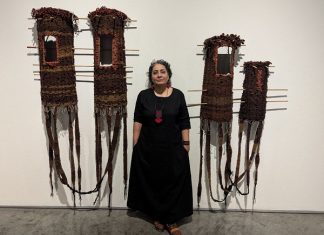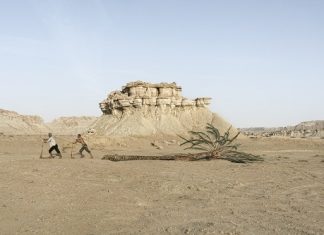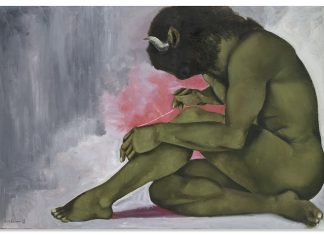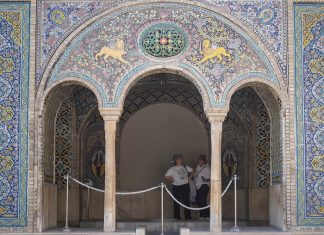By Rawaa Talass
Art Dubai opened earlier this week for its 14th iteration, after cancelling last year on account of the Coronavirus epidemic. Organizers moved the event from its usual location, the vast Madinat Jumeirah, to the Dubai International Financial Center (DIFC).
Social distancing, mask wearing and timed visits were introduced, as well as on-site PCR testing. A purpose-built structure split into three sections accommodated 50 galleries from 31 countries in the Middle East, North Africa, Asia and sub-Saharan Africa.
[aesop_image img=”https://kayhanlife.com/wp-content/uploads/2021/04/2021-edition-of-Art-Dubai.-Image-courtesy-Art-Dubai-scaled.jpeg” panorama=”off” credit=”2021 edition of Art Dubai. Image courtesy Art Dubai” align=”center” lightbox=”on” captionsrc=”custom” captionposition=”left” revealfx=”off” overlay_revealfx=”off”]
Participants were from Addis Ababa, Beirut, Baku, Manila, Madrid, Ramallah, and of course, Tehran. Iranian artists and gallerists working both inside and outside Iran were present at the fair.
Among the participating galleries was the Leila Heller Gallery — established in New York in the early 1980s by the longtime Iranian art dealer Leila Heller, who opened her Emirati outpost in 2015 in Dubai’s AlSerkal Avenue cultural hub. Heller represents Iranian and Western talents including Y.Z. Kami and Firooz Zahedi, as well as the estates of the late Iranian modern artists Marcos Grigorian and Farideh Lashai.
“It feels so liberating and so lovely to see my colleagues, different artists – whether they’re with my gallery or other galleries – and to see people,” she told Kayhan Life in an interview. “My artists have not been able to show themselves, especially the ones from Iran, because in Iran there’s no vaccine yet. They’re all cooped up in their studios or homes.”
Heller’s stand featured a group show of multidisciplinary artists from Lebanon, Iran, and India. The Tehran-born Aref Montazeri’s twisting mirror sculptural works were on view, as well as an animated drip painting by the half-Iranian artist Sacha Jafri — who made international headlines recently by creating the world’s largest canvas and giving the proceeds of the sale to charity.
Facing Jafri’s work were a muted 1961 painting by Grigorian, and a 2020 neon artwork spelling out the word ‘feminism’ in Farsi by Leila Pazooki, who frequently incorporates language in her practice.
Another standout display was a photographic triptych by Reza Aramesh portraying Palestinian refugees in the lavish interiors of the Palace of Versailles. “Aramesh asked the president of Versailles to allow him to use Versailles as the stage,” said Heller, who explained that the artist was juxtaposing “refugees who are homeless and stateless” with the grandeur and extravagance of the palace.
Were collectors buying? “Some are reserved a bit, but we sold quite a bit yesterday and today,” said Heller on the second day of the event. Among the acquired works were minimalist and stainless steel sculptures by the Mumbai-born architect Tarik Currimbhoy.
Meanwhile, Dubai’s The Third Line, co-founded 15 years ago by Iranian-American Sunny Rahbar, showed a colorful selection of artworks by Monir Farmanfarmaian and Laleh Khorramian, among others. Making his Art Dubai debut was Tehran-born geometric artist Nima Nabavi, who lives and works in the UAE, and is known for smaller compositions of intersecting lines, executed on paper.
[aesop_image img=”https://kayhanlife.com/wp-content/uploads/2021/04/Detail-of-Nima-Nabavis-painting.-Image-courtesy-The-Third-Line.jpg” panorama=”off” credit=”Detail of Nima Nabavi’s painting. Image courtesy The Third Line” align=”center” lightbox=”on” captionsrc=”custom” captionposition=”left” revealfx=”off” overlay_revealfx=”off”]
At Art Dubai, he showed his largest painting to date, an experimentation with geometry which, from a distance, looked to have a diamond shape at its center.
Each pixel was painted individually, according to the artist: one color at a time, and a second coat was then placed on top. It took him two and a half months to complete, and the work has already been acquired by a client of the gallery.
“I want my work to be indescribable, to be strange and familiar at the same time,” said the artist. Geometry and symmetry “really resonate” with people, he added. “On some level, whether you realize it or not, your mind knows that this is symmetrical. Your mind feels that there is order in it, but because it’s ultra complex, both weird and familiar.”
Over at the Tehran and L.A.-based Saradipour Art Gallery, viewers got a taste of figurative art by Moslem Khezri. In his latest paintings (part of the “We Keep Reviewing” series), little boys read, write, chat and play games in a classroom setting. The young students are depicted almost photographically, in a warm palette of colors.
“Moslem’s paintings have been very well received so far,” said the gallery’s art advisor Sajjad Emadi in an email. “Most of them talk about nostalgic memories.”
Art Dubai ends April 3 at DIFC. All ticketing is through the Art Dubai site: www.artdubai.ae


